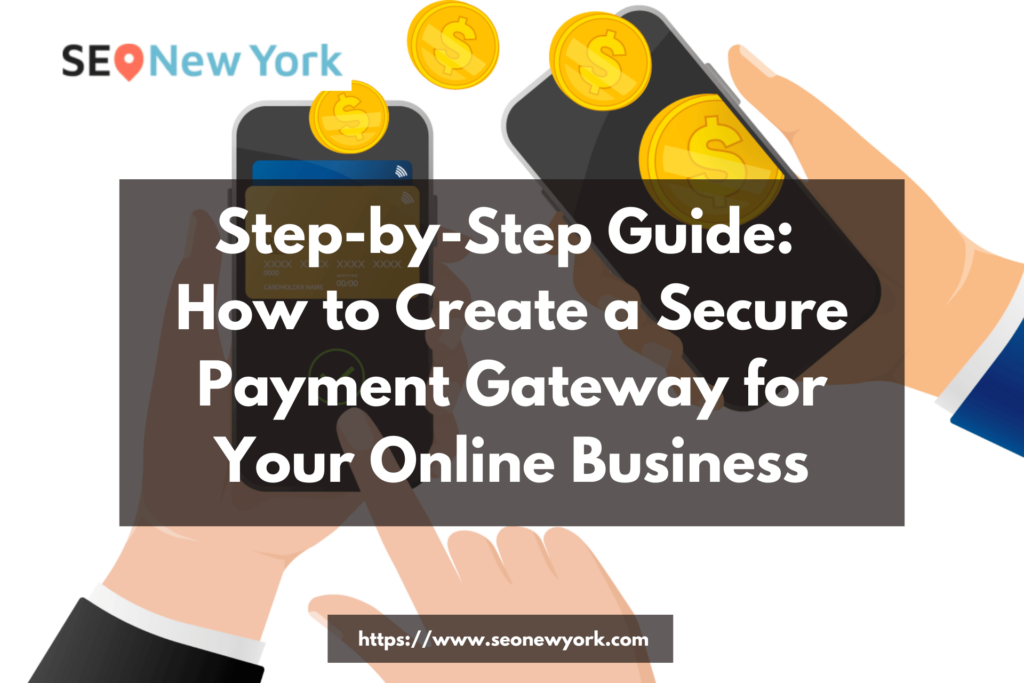Creating a secure payment gateway is crucial for any online business that wants to process payments safely and efficiently. A payment gateway acts as a bridge between your website and the payment processor, ensuring that sensitive information like credit card numbers and personal data is transmitted securely. In this article, we’ll provide a step-by-step guide to help you create a secure payment gateway for your online business.
Step 1: Determine Your Payment Processing Needs
Before you start building your payment gateway, you need to determine your payment processing needs. Consider the following factors:
Payment methods: What types of payment methods do you want to accept? Common options include credit cards, PayPal, and bank transfers.
Payment frequency: How often will payments be processed? Will you be processing payments daily, weekly, or monthly?
The volume of payments: How many payments will you be processing each day or month?
Geographical location: Will you be accepting payments from customers around the world or just in your local area?
Once you’ve determined your payment processing needs, you can start looking for a payment gateway that meets those needs.
Step 2: Choose a Payment Gateway Provider
There are several payment gateway providers available, each with its own unique features and benefits. Some of the most popular providers include PayPal, Stripe, and Authorize.net. When choosing a provider, consider the following factors:
Security features: Look for a provider that offers robust security features such as SSL encryption, fraud detection, and secure data storage.
Integrations: Make sure the payment gateway integrates with your website platform and any other tools you use for your online business.
Fees: Compare fees from different providers to find the one that offers the best rate for your business.
Customer support: Look for a provider that offers reliable customer support, so you can get help quickly if you run into any issues.
Step 3: Set Up Your Payment Gateway
Once you’ve chosen a payment gateway provider, you’ll need to set it up. This typically involves the following steps:
Sign up for an account: Create an account with the payment gateway provider and follow their instructions to set it up.
Connect to your website: Connect the payment gateway to your website using the provided integration instructions.
Configure settings: Configure settings such as currency, payment methods, and payment processing frequency.
Test the payment gateway: Test the payment gateway to make sure everything is working properly.
Step 4: Secure Your Payment Gateway
Securing your payment gateway is a critical step in ensuring that sensitive information is transmitted safely. Consider the following security measures:
SSL encryption: Use SSL encryption to protect sensitive information like credit card numbers and personal data during transmission.
PCI compliance: Ensure that your payment gateway is PCI compliant. The Payment Card Industry Data Security Standard (PCI DSS) is a set of security standards designed to protect cardholder data.
Secure data storage: Make sure that sensitive information is stored securely on the payment gateway provider’s servers.
Fraud detection: Implement fraud detection tools to prevent unauthorized transactions.
Step 5: Monitor Your Payment Gateway
Once your payment gateway is up and running, it’s important to monitor it regularly to ensure that it’s functioning properly. Consider the following:
Regularly review transactions: Review transactions regularly to look for any unusual activity.
Stay up to date with security measures: Stay up to date with the latest security measures to ensure that your payment gateway remains secure.
Monitor customer feedback: Monitor customer feedback to see if there are any issues or complaints related to the payment gateway. Address any problems promptly to maintain the trust of your customers.
Use reporting tools: Use reporting tools to track metrics such as transaction volume, success rates, and average transaction time.
Step 6: Offer Customer Support
Finally, make sure that you offer excellent customer support to your customers. This includes providing clear instructions on how to use the payment gateway, offering help with any issues, and responding promptly to any questions or concerns.
In conclusion, creating a secure payment gateway is a crucial step in building a successful online business. By following the steps outlined in this guide, you can ensure that your payment gateway is secure, efficient, and user-friendly. Remember to choose a reputable payment gateway provider, implement robust security measures, and monitor your payment gateway regularly to ensure that it remains secure and functional. By offering excellent customer support, you can also build trust with your customers and increase the likelihood of repeat business.
